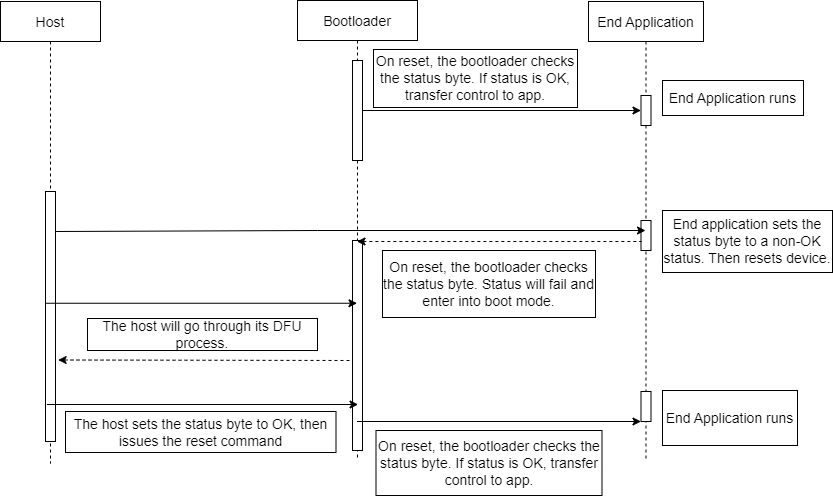5.2 Check Status Byte
In this method the bootloader and the host application will communicate program status
through a reset byte value, also known as a State Flag or Status Byte.
Overview
In the Check Reset Byte verification method, also known as a Check State Flag verification method, the bootloader will verify that the application image space was programmed successfully by checking for a pre-configured byte value at a pre-configured memory location that both the host and the bootloader have access to. This does not check the validity of the application image, it only checks to see if the bootloader populated the application image into the program memory and set the state flag value to the predefined "valid application" byte value.
Verification Flow

